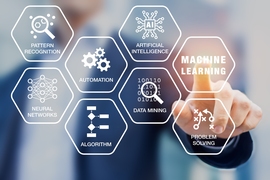David Simchi-Levi is a professor of engineering systems with appointments at the Institute for Data, Systems, and Society and the Department of Civil and Environmental Engineering (CEE) at MIT. His research focuses on developing and implementing robust and efficient techniques for supply chains and revenue management. He has founded three companies in the fields of supply chain and business analytics: LogicTools, a venture focused on supply chain analytics, which became a part of IBM; OPS Rules, a business analytics venture that was acquired by Accenture Analytics; and Opalytics, which focuses on cloud computing for business analytics.
In addition to his role as a professor of engineering systems, Simchi-Levi leads the Accenture and MIT Alliance in Business Analytics. The alliance brings together MIT faculty, PhD students, and a host of partner companies to solve some of the most pressing challenges global organizations are facing today. The alliance is cross-industry, collaborating with companies in sectors ranging from retail space, to government and financial services, to the airline industry. This diversity enables the alliance to be cross-functional, with projects that focus on everything from supply chain optimization to revenue generation and from predictive maintenance to fraud detection. In many cases, these endeavors have led to companywide adoption of MIT technology, analytics, and algorithms to increase productivity and profits.
Putting theory to practice, Simchi-Levi and his team worked with a large mining company in Latin America to improve its mining operations. Their algorithm receives data every five seconds from thousands of sensors and predicts product quality 10, 15, and 20 hours prior to product completion. Specifically, they used these data to identify impurities, such as silica level in the finished product, and to suggest corrective strategies to improve quality.
In the realm of price optimization, Simchi-Levi’s alliance has worked with a number of major online retailers, including Groupon; B2W, Latin America’s largest online retailer; and Rue La La. Rue La La operates in the flash-sale industry, in which online retailers use events to temporarily discount products.
“But how do you price a product on the website the first time if you have no historical data?” Simchi-Levi asks. “We applied machine learning algorithms to learn from similar products and then optimization algorithms to price products the company never sold before, and the impact was dramatic, increasing revenue by about 11 percent.”
It’s a deceptively simple answer. But for Simchi-Levi, well known as a visionary thought leader in his field, solving tough problems is at the heart of the work of the Accenture and MIT Alliance in Business Analytics.
“In the case of Groupon and B2W, we developed a three-step process to optimize and automate pricing decisions,” he says. First, they utilize machine learning to combine internal historical data with external data to create a complete profile of consumer behavior. Second, they post pricing decisions on the website and observe consumer behavior. Third, they learn and improve pricing decisions based on that behavior in order to optimize the final price. “In all of these cases, we made a big impact on the bottom line: increasing revenue, increasing profit, and increasing market share,” he says.
At any point in time, Simchi-Levi’s business analytics alliance, which has been going strong since 2013, has between 10 and 20 projects running simultaneously. He suggests the reason so many companies are turning to MIT for their business challenges has a lot to do with recent technology trends and the Alliance’s role at the forefront of those developments.
Specifically, he mentions three technology trends: digitization; automation; and analytics, including the application of machine learning and artificial intelligence algorithms. However, he observes that initially it is difficult for executives to accept that black box analytics can do a better job at pricing a product than the merchants who know the product and have been working in the industry for 25 years. While Simchi-Levi concedes that this is partially true, he notes that with thousands upon thousands of products to price, merchants can focus only on the top 10 percent, whereas MIT’s analytics can achieve the same performance on the top 10 percent, while achieving an equally impressive performance on the middle 50 percent and equally similar performance on the long tail.
More precisely, “While the company merchant will focus on a small portion, we can focus on the entire company portfolio,” he says. “We’re talking about the ability to use data and analytics to optimize prices for thousands of products.”
“Business analytics is a very exciting area. If you open any business journal you will see references to data science and data analytics,” Simchi-Levi says. But his expertise has led him to explore a deeper truth about this obsession with data analytics: “My experience is that while there is a lot of excitement around this area, industry actually does very little [in the way of] using data and analytics to automate and improve processes.”
He says there are three main challenges industry faces in the area of data analytics: data quality, information silos, and internal resistance. “What we do at MIT is bring all of these opportunities together by improving the data quality, convincing executives to start experimenting with some of the technology, and connecting different data sources into an effective platform for analytics.”










